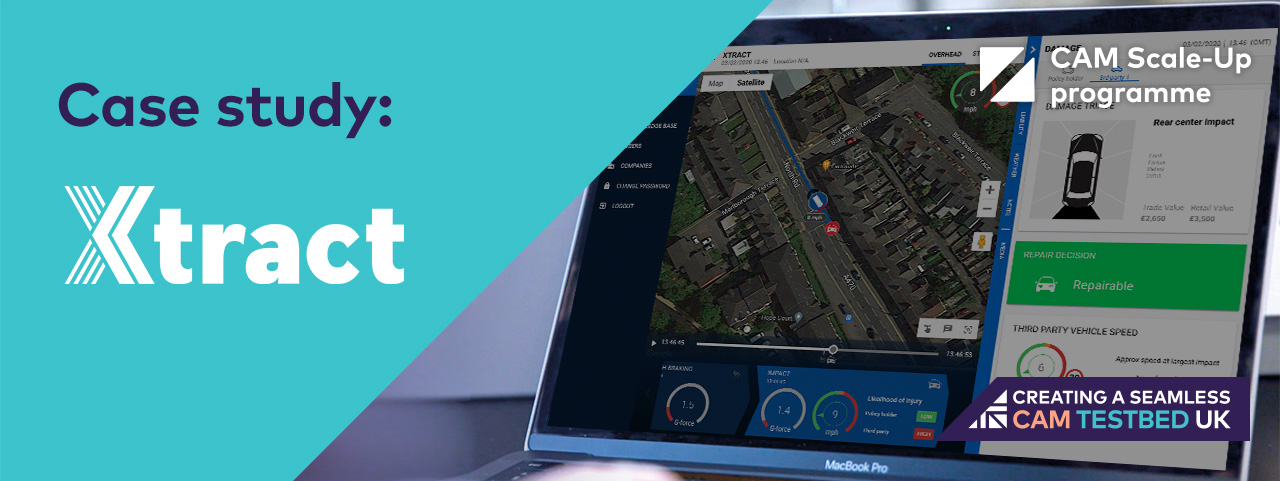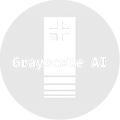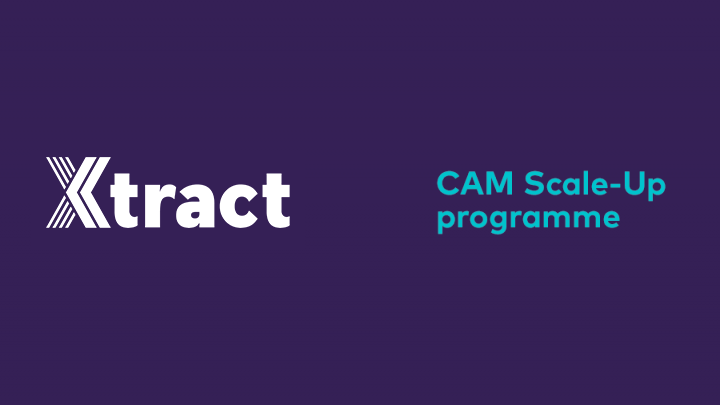



Xtract and the CAM Scale-Up programme
Transforming how motor claims are processed through their connected claims platform.

Xtract’s claims platform seeks to aggregate and visualise critical claims data from any fleet with every provider, into a single ‘pane of glass’, providing faster, more accurate decision-making for the insurance industry.
Having been in the telematics mobility space for eight years, Xtract founder and CEO Michael Flanagan’s experience led him to identify a problem in the Irish insurance industry. Insurance premiums were increasing markedly for fleet customers alongside the number of claims made with insurance companies across the board. Further investigation found that the telematics data from commercial vehicles were not making it into the claims process, mainly because it was hard to interpret and and not at all user-friendly.
Michael explains:
We realised we would be able to provide more visibility around what was happening during accidents and reduce the risk for our customers, by looking deeper into the data that was being produced from the vehicles.”
Xtract decided to solve this problem by creating a product that would ingest telematics data from any source and present the data in a way that made an incident easy to recreate seconds after it occurred.
What makes Xtract special?
Xtract works with telematics data from any source. By focusing purely on the analysis of the data for claims management is a key differentiator.
The software Xtract developed is designed to convert any telematics dataset, whatever the format into a standard output, so that any claim resulting from an incident is easy to understand and quick to handle. Gone is the need for 20-minute phone calls to run through the critical 20 seconds of an incident; by using Xtract’s software insurers and commercial fleets are able to capture data at the source, auto-populating a claim at the moment of impact.
Xtract’s testing journey
Utilising the CAM Scale-Up network to increase their data pool and use cases.

Xtract focused their testing at Smart Mobility Living Lab: London, utilising its access to the busy city environment in central London. With the testing centred in Woolwich, they spent five days collecting data from multiple telematics sources including smartphone, dashcam and OBD II, recording road events in real-time to strengthen the repository of information they draw from. They then combined the data gathered with CCTV, using the footage to support their visualisations with a video of events.
The Zenzic CAM Scale-Up programme has helped us in a couple of key ways. We’ve been able to widen our network and speak to companies we didn’t have the opportunity to speak to in the past. It’s also enabled us to gather a wealth of information we didn’t have access to previously, including CCTV footage, video footage and lidar imagery. This provided us with greater insights, as well as validating our work and accelerating our development. It’s been really exciting, as it’s shown us what the future could like in terms of the insights we’ll be able to gain from accidents.”
– Michael Flanagan
What would success look like:
The smooth reporting journey depends on Xtract having a connection with the vehicle in question. The company currently has an integration with the two largest telematics companies, and following the work completed as a result of participating in the Zenzic CAM Scale-Up programme they hope to get more fleets to opt in.
Additionally they aim to use the programme as a springboard to collect OEM quality data. It has been difficult for OEMs to work out what they want the data for and how to monetise it. While claims have not been a primary focus for OEMs, Xtract has been working with the automotive data exchange companies to encourage OEMs to do the extra work required to collect more robust data that will better facilitate accurate reconstruction of accidents. Through the Zenzic CAM Scale-Up programme, Xtract will be able to create a proof of concept that showcases their software to the CAM ecosystem and graphically demonstrates to OEMs the benefits of what can be done with the right data.
Programme results
Xtract’s testing programme has resulted in business success across three core aspects.Development:
The testing enabled Xtract to demonstrate the accuracy of current GPS-based path reconstruction, and provided the groundwork for future sensor-fusion based path reconstruction.
Validation:
Xtract were able to validate the event detection methods used on commercial telematics devices through comparison with the high-quality CAV data.
Sustainability:
Working with Zenzic through the CAM Scale-Up programme provided Xtract with the opportunity to improve noise filtering of accelerometer data, leading to cleaner detections of smaller events.
More SME case studies

Providing solutions for navigating challenging environments through high-accuracy geolocation technology.

Improving insurance savings and reducing accident rates through live GPS tracking.

Using neuromorphic software, Grayscale AI provides human-like precision to navigating roads.

Revolutionising the safety of vulnerable road users by using point-to-point radar technology.

The edge processing solution that provides in-depth insights into movement within cities.
Find out more about the
CAM Scale-Up programme
discover more

Talk to us
Want to talk about connected and automated mobility in the UK and see how Zenzic can help you?
{{ teamMember.name }}
{{ teamMember.title }}
